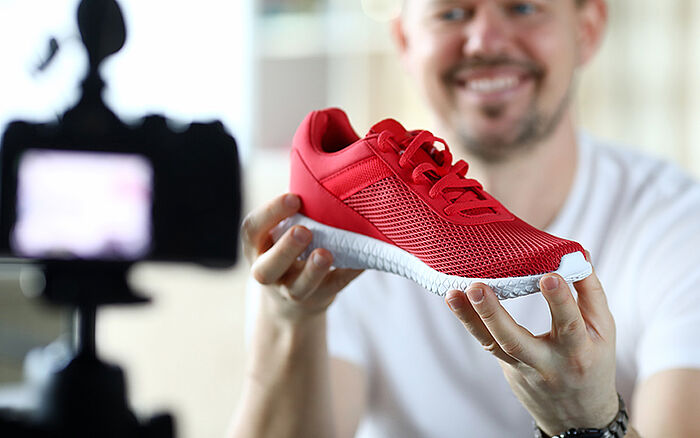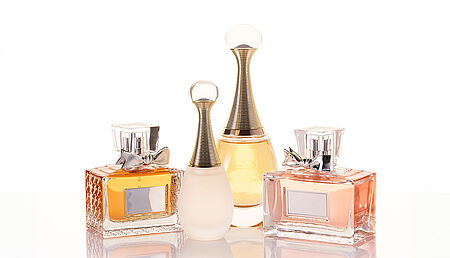
Faux fashion: how TikTok became a runway for counterfeits
Open TikTok at any moment and you will scroll past a mix of dance routines, cooking hacks and cats in sunglasses. But between the latest crazes and lighthearted videos, there are luxury handbags that seem too cheap to be real, sneakers that cost less than a cinema ticket and cosmetics promising results that defy belief.
TikTok Shop has turned the social media platform into a global marketplace where spending is impulse-driven and effortless: two qualities that are music to counterfeiters' ears. Using the same recommendation algorithms that boost influencers, fraudsters promote imitation goods that spread faster than any dance trend.
Officially launched in 2023 after the company's earlier regional forays, TikTok Shop has become one of the fastest-growing e-commerce platforms worldwide. Its direct shopping model has changed how many people discover and buy products, but it has also blurred the line between genuine retail and illicit trade.
Double trouble: the legality of dupes
TikTok's algorithm rewards content that holds attention. It does not distinguish between a genuine skincare tutorial and one featuring bogus cosmetics. The result is a platform where listings can reach massive audiences before moderation takes effect.
Sellers have learned to exploit this free-for-all environment by promoting "dupes," a term often used to describe less-expensive lookalikes of popular, typically luxury, products. Seemingly unabashed about their imitative nature and reputational inferiority, these goods are openly confronting industries that are more used to tackling clandestine knock-offs and counterfeits.
So, are dupes fakes? In a sense, yes, much the same way that faux leather and rhinestones are fakes – they replicate the appearance and fulfill the general function of something much more expensive. This is not inherently illegal, just so long as they do not claim to be leather and diamonds, of course. Hence, dupes, for the most part, are considered cheaper legitimate alternatives to high-prestige products, albeit ones that regularly flaunt their para-cultural glamour as a means of easy self-promotion.

Dupes, as a category, have acquired a level of "coolness" not typically assigned to "off-brand" products. This helps mitigate some of the concerns consumers may have about value for money.
That said, some of the misapprehension surrounding the definition and legality of dupes no doubt stems from the word's coincident meanings: a shortening of "duplicate" and a person who is easily deceived or swindled. A fool and his money are soon parted, after all.
Regardless of any fluke or irony of semantics, nobody wants to be taken for a fool in the marketplace; thus, holders of adjacent IP rights regard so-called dupes with a concern that exceeds even the most skeptical shopper's wariness. Not least because industrial designs are particularly liable to being encroached upon, through an excess of bravado or deficiency of care, in the hazy gray zones dupes deliberately inhabit.
Counterfeiting, the sincerest form of fraud
What is clear is that where fakes act as replacements for the emulated goods or confuse would-be buyers, accusations of riding coattails, passing off and other unfair business practices can be levelled. For the closest copies, those that (implicitly) purport to be the original, charges of trademark infringement, tarnishment and counterfeiting are all on the table.
In skirting around the boundaries of IP rights and commercial law, dupes share two perilous tendencies with counterfeits: to mislead consumers and pose a danger to their health due to a lack of regulatory control.
In theory, the consumer should be able to recognize a dupe as it is meant to serve as an achievable proxy for the real thing. A counterfeit, by its camouflage, is much more insidious. Even so, on social media, that difference often gets lost in the endless scroll of recommendations and lifestyle "hacks."
The Korean skincare brand COSRX has reported widespread imitation of its products across TikTok and Amazon, some containing harmful ingredients. Similar issues affect fashion and beauty brands. In the United Kingdom, the not-for-profit consumer organization Which? carried out a survey of 34 cosmetic products placed on Amazon, eBay, TikTok Shop and Vinted by third-party sellers. Of these, 23, or about 68 percent, were found to be likely counterfeits.

Paid promotions by social media personalities are another additive in the recipe for viral success. However, the monetary incentives mean that sponsored products often do not get thoroughly scrutinized before being put into the limelight.
The "Choose Safe not Fake" campaign from the United Kingdom Intellectual Property Office highlighted the toxic composition of some counterfeit hygiene and beauty products, as well as the deeply unsanitary conditions of their manufacture. A selection of goods seized by law enforcement was found to contain "carcinogenic ingredients such as beryllium oxide and harmful heavy metals (arsenic, lead and mercury)," while others showed traces of "rodent urine and equine faeces."
Influence and imitation: TikTok's challenge with counterfeits
TikTok prohibits fake goods and allows rights holders to report infringing items. It has also joined the International Trademark Association's "Unreal" campaign to raise awareness about brand protection among younger users. Still, the pace of enforcement struggles to match the speed of viral content.
Television personality Bethenny Frankel learned this first-hand in 2022 when scammers used one of her old videos to promote counterfeit cardigans. The clip was edited to suggest endorsement and widely circulated, prompting the reality television star to file a class action lawsuit against TikTok for allowing the unlawful use of her and others' "persona, voice, content, and likeness […] in connection with the promotion of counterfeit goods resulting in irreparable harm."
Though the case eventually left the court for arbitration, the dispute highlighted how moderation can falter under the volume and velocity of user-generated content.
Removing fake listings can feel like a game of whack-a-mole. For every counterfeit taken down, another appears. The issue is no longer whether these infringements exist but how quickly they spread.
What is the appeal? The psychology of dupe culture
The popularity of dupes is not only about saving money in the face of buoyant pricing for high-end goods; it is tied to peer reception, the pursuit of status and being in the know. Speaking to the Financial Times, Susan Scafidi of Fordham University's fashion law institute pointed to a "Robin Hood mentality" pervading dupe culture: "It's become less about the joy of finding a bargain, and more about sticking it to the luxury brand."
In this model, the exclusivity that raises social standing derives less from being affluent and more from being au fait. "Dupes seem like a way to have your cake and eat it, too," added Susan Scafidi.

A study in Deviant Behavior showed that younger, especially male, social media users could be enticed into illicit purchases due to their "higher susceptibility to influence, lower risk perception, higher risk appetite and greater capacity for rationalization."
TikTok's endless flow of "influencer finds" and clique behavior encourages this mindset. Research company YPulse carried out a study in 2023 asking young consumers if they would knowingly buy a dupe when they could afford the original. More than half of 13-to-39-year-olds in the United Kingdom said yes, rising to 60 percent in North America.
From a brand perspective, IP goes beyond a collection of business assets to represent credibility, quality and consumer trust. Counterfeits damage this foundation, eroding confidence in what is sent to market and weakening the very idea of the protection that IP laws uphold.
Authenticity as a competitive edge
Technology has become a vital ally in the fight against counterfeiting. Companies such as Entrupy use millions of data points and artificial intelligence (AI) to verify luxury goods, while Real Authentication brings the expert eyes of trained specialists to bear with the snap of a photo. Businesses on the lookout for infringing activity can employ monitoring tools like BrandShield and Hubstream to help track counterfeit listings and seller networks across digital marketplaces.
These systems give brands greater visibility into how fake products spread online. However, technology is only one part of the solution. Legal expertise and crafted IP strategies remain essential. Global IP service providers like Dennemeyer manage trademarks, patents and designs across jurisdictions, ensuring that brands can lay down a firm bedrock of exclusive rights and act quickly and decisively when infringement occurs.
TikTok's counterfeit problem, on the other hand, draws attention to a broader truth about the digital economy: Imitation may trend, but authenticity endures. The same algorithms that amplify fakes also reward transparency and trust. Brands that invest in strong IP protection give themselves the best chance to turn earned loyalty into long-term value.
For businesses, the message is clear. The legitimacy distilled and upheld by IP rights, whether in fashion, cosmetics or technology, is what sustains reputations and consumer relationships over time.
Contact the Dennemeyer legal team to learn how strategic IP protection can help your brand combat counterfeit trends on TikTok and beyond.
Filed in

An analysis that breaks down the trademark decisions from this year that hold the most relevance for both legal practitioners and brand owners.



